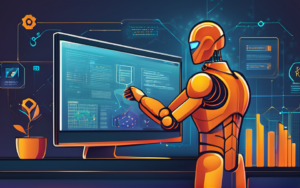In today’s digital world, where our lives are increasingly intertwined with technology, protecting our online presence and sensitive data is paramount. This is where cybersecurity comes in. It’s the practice of safeguarding computer systems, networks, and data from unauthorized access, use, disclosure, disruption, modification, or destruction.
What Is Cybersecurity?
Defining Cybersecurity
Cybersecurity encompasses a wide range of technologies, processes, and practices designed to protect our digital assets. It’s about ensuring that our online activities, transactions, and information remain secure and confidential. Think of it as the digital equivalent of a fortress, with layers of defenses to prevent attackers from gaining access and causing harm.
The Importance of Cybersecurity
The importance of cybersecurity cannot be overstated. In today’s interconnected world, every individual, organization, and government is vulnerable to cyberattacks. Whether it’s a personal email account, a small business website, or a critical infrastructure system, the consequences of a successful cyberattack can be devastating.
Key Components of Cybersecurity
Network Security
Network security focuses on protecting the network infrastructure, including routers, switches, and firewalls, from unauthorized access and cyber threats. This involves implementing strong access controls, monitoring network traffic, and detecting and responding to suspicious activity.
Data Security
Data security aims to protect sensitive information, such as personal data, financial records, and intellectual property, from unauthorized access, use, disclosure, alteration, or destruction. This includes encryption, data masking, and access controls.
Application Security
Application security focuses on protecting software applications, websites, and web services from vulnerabilities that could be exploited by attackers. This involves secure coding practices, vulnerability scanning, and penetration testing.
Endpoint Security
Endpoint security refers to the protection of individual devices, such as computers, laptops, smartphones, and tablets, from cyber threats. This involves using antivirus software, firewalls, and intrusion detection systems to prevent malware infections and other attacks.
User Education and Training
User education and training are crucial for preventing cyberattacks. By educating employees and individuals about cybersecurity best practices, we can reduce the risk of human error and social engineering attacks.
Cybersecurity Threats and Risks
Malware
Malware is any software designed to harm or disrupt computer systems or steal sensitive information. This includes viruses, worms, Trojans, ransomware, and spyware.
Phishing
Phishing attacks involve sending fraudulent emails or messages that appear to be from legitimate sources, aiming to trick users into revealing sensitive information, such as login credentials or credit card details.
Ransomware
Ransomware encrypts a victim’s files and demands payment for their decryption. It can target individuals, businesses, and even critical infrastructure systems.
Data Breaches
Data breaches occur when sensitive information is stolen from a computer system or network. This can have serious consequences for individuals, businesses, and governments, leading to financial losses, identity theft, and reputational damage.
Denial-of-Service Attacks
Denial-of-service (DoS) attacks attempt to overwhelm a target system with traffic, making it unavailable to legitimate users. These attacks can disrupt online services, websites, and critical infrastructure.
Best Practices for Cybersecurity
Strong Passwords and Multi-Factor Authentication
Using strong, unique passwords for each online account and enabling multi-factor authentication (MFA) can significantly improve security. MFA requires users to provide multiple forms of identification, making it much harder for attackers to gain unauthorized access.
Regular Software Updates
Software updates often include security patches that fix vulnerabilities exploited by attackers. Regularly updating your operating system, applications, and software is essential for maintaining a secure digital environment.
Backups and Disaster Recovery
Creating regular backups of your data and implementing a disaster recovery plan can help you recover from a cyberattack or other data loss event. This ensures that you can restore your systems and data to a previous state.
Security Awareness Training
Security awareness training is crucial for individuals and organizations. By providing employees and users with the knowledge and skills to recognize and respond to cyber threats, we can mitigate the risks of human error and social engineering attacks.
Incident Response Planning
Having a well-defined incident response plan is essential for effectively responding to cyberattacks. This plan should outline steps for detecting, containing, and recovering from an attack.
The Future of Cybersecurity
Emerging Technologies and Threats
As technology continues to evolve, new cybersecurity threats emerge. Artificial intelligence (AI), blockchain, and the Internet of Things (IoT) present both opportunities and challenges for cybersecurity.
The Role of Artificial Intelligence
AI is playing an increasingly important role in cybersecurity. It can be used to detect and prevent cyberattacks, analyze vast amounts of data to identify patterns, and automate security tasks.
The Importance of Collaboration
Collaboration between individuals, organizations, and governments is essential for combating cyber threats. Sharing information and best practices helps to improve overall cybersecurity.
Cybersecurity is a dynamic and ever-evolving field. It requires ongoing vigilance, education, and collaboration to protect our digital lives and assets. By understanding the basics of cybersecurity, implementing best practices, and staying informed about emerging threats, we can enhance our digital security and mitigate the risks of cyberattacks.




